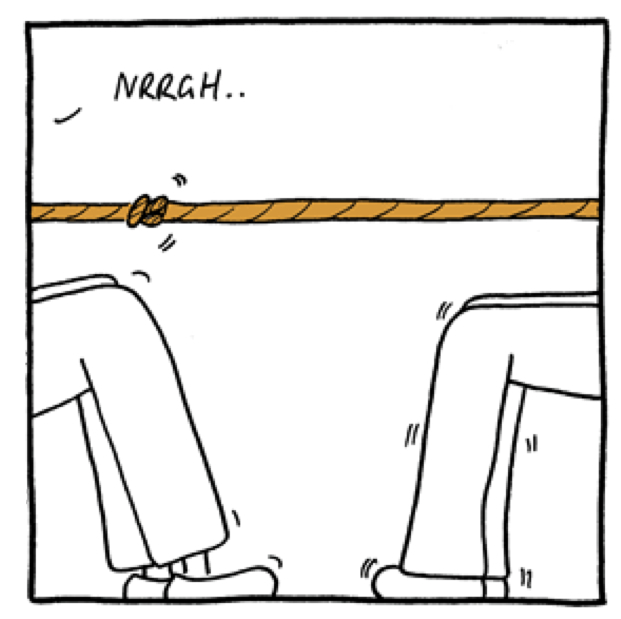The Tug of War
My previous post prompted thoughts about the eternal struggle within organisations between those who understand the need for new design going forward and those who would rather see the world through a rear-view lens and adopt reductionist approaches. It’s easy enough to promote the former as the most proactive and the latter as the reactive enemy of progress. However, I’m not sure that this is helpful or even correct. Both are valuable.
It seems that across any given topic there is a tremendous diversity and range of views and it is the views at the extreme ends that capture most of the attention. As a simple example, across an environmental continuum we have fervent kaftanned, Greenies at one end who will happily chain themselves to trees to stop the bulldozers, and at the opposing end we have the rapacious, property-developers who focus solely on the almighty dollar. Most of us of course sit somewhere in between.
If we imagine the continuum forming a rope that is being pulled from each end we have the most active views expressed at the extreme ends. I suspect it is the tension created by these extreme ends that helps to keep the overall position of the rope centred. If we suddenly lost the voice and “pull” of the most strident Greenies the rope would most certainly be pulled toward the rapacious development side, where we’d all end up living in treeless McMansions. Conversely, if we didn’t have the developers, the “pull” exerted by the extreme environmentalists would have us all living as hairy arm-pitted, mud hut dwelling, Wickens worshiping the Earth Mother.
The extreme views of each serve to keep the rope taut and centred. Those who occupy the middle ground and move up and down the rope depending on context, are the ones who are in the best position to help an organisation achieve its goals.
Back to those who favour saving and cost-cutting approaches to efficiency and those who favour new design approaches. The ideal scenario is one in which we utilise both approaches. As context changes so too does the need for differing interventions. Sometimes it will be creative design and sometimes it will need to be the reduction of something current. Either way its important to understand the drivers for each and learn to fluidly occupy the rope between the extremes. A combination of both approaches is the ideal.


Comments
No comment yet.